
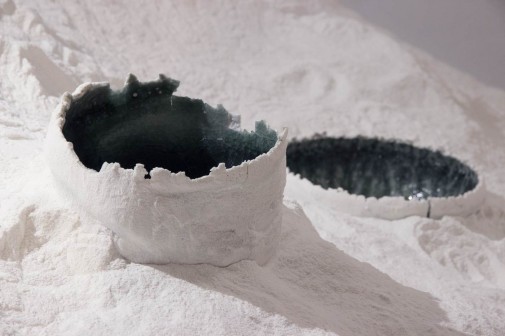



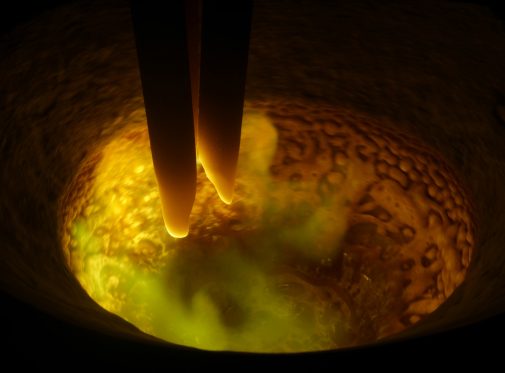
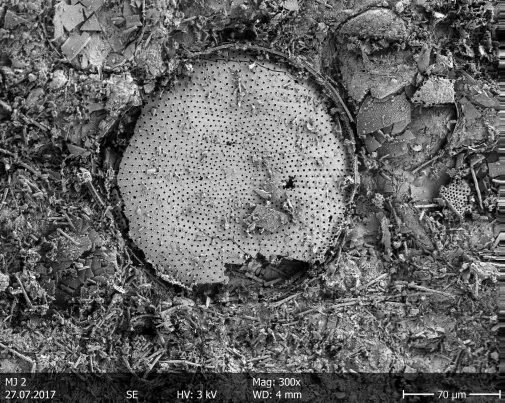
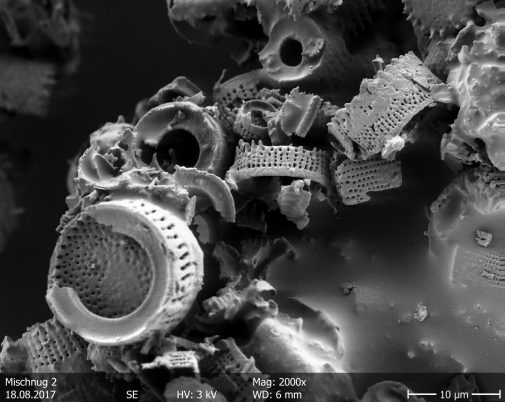
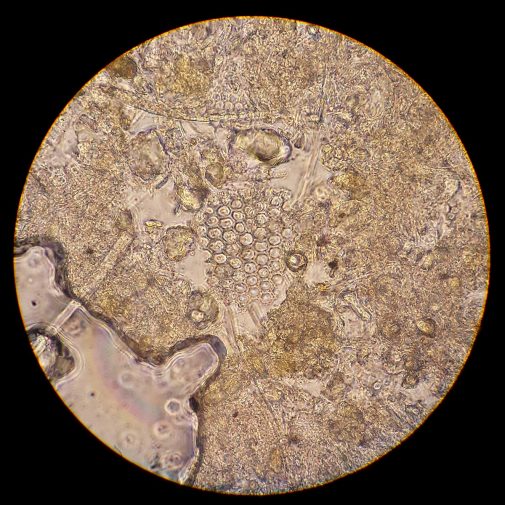
Installation
Diatom sand, glass, C-printS
for the installation Diatomeen (Bacillariophyta) Diatom sand was melted to glass objects. Compared to conventional industrial glass production from geological quartz sand at about 1500°C, the “diatom sand” is of biological origin (sea creatures) and was melted at about 4000°C in an electric arc.
Diatom soils are millions of years old deposits of skeletons of diatoms (consisting of SiO2 = Glass) occurring in the ocean, the main component of the phyto-plankton of the seas. In the Tertiary (Miocene) and Quaternary geological oceans, diatoms were present in large quantities and contributed significantly to the creation of the habitable climate and ecosystems on Earth. Deposits of silicified cell walls of the microorganisms form today meter high layers of diatomaceous earths, which are mined in few places on earth like in the region around Maissau (Lower Austria/AT).
Markus Jeschaunig is interested in subjecting this unprocessed and pure material to a metamorphosis in just one production step through the action of heat, thus referencing the differentiated practice of human raw material processing and production chains.
Exhibition: PHANTASTISCHES WISSEN, innerlich durchleuchtet
Institution:
Prize for contemporary Fine Art – Diozöse Graz Seckau 2019
Kulturzentrum bei den Minoriten, Graz
Nominated artists:
studio asynchrome
Max Frey
Anita Fuchs
Markus Jeschaunig
Ulrike Königshofer *
Alfred Lenz
Wendelin Pressl
Curator(s):
Astrid Kury, Katrin Bucher-Trantow, Roman Grabner
Kindly supported by:
Heraeus Quarzglas GmbH & Co. KG / Heraeus Conamic
apj Gmbh
EP Minerals LLC
Universität Graz – Institute for Earth Sciences
Photos (c) Jeschaunig

